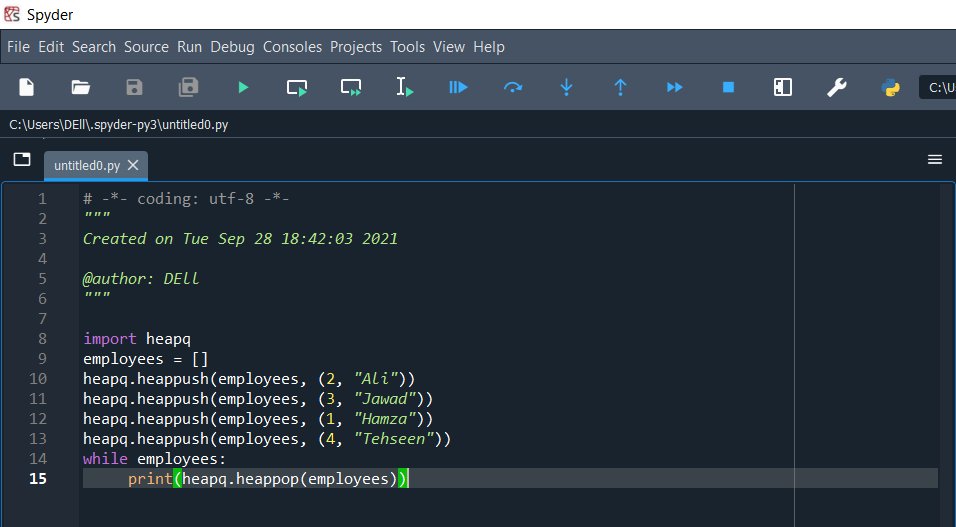

Whereas, heappushpop() pushes an item into the queue changing the size of the queue, and then pops the smallest (highest priority) element out. The difference between heapreplace() and heappushpop() is that heapreplace() pops the item first and then pushes the item into the queue which is the actual definition of replacing an element. The heappushpop() method increases the efficiency and takes less time than to push and pop an element using separate functions. The heappushpop(heap, item) combines the functionality of the heappop() and the heappush() methods. The heapq module also provides a method called heappushpop(heap, item). Therefore, it is put to the last of the queue. The priority of the new element is the lowest. The heapreplace() function dequeues the element with the highest priority and adds the new element in the queue. You will pass the queue to pop an item from and pass the new item to add into the queue. The index is the location where the item (key, value) of the Priority Queue is stored. An item in the Priority Queue will have a key and a value. Create a heap first, then push items into the heap. We can use heap implementation of Priority Queue to get value at an index. The only difference is that in a priority queue the order of the elements depends on the priority number of the element. In a min-heap, the smallest node is the root of the binary tree.īoth priority queue and min heap are the same. Similarly, if the implementation is min-heap, then Priority Queue will be a min-priority queue. If the implementation of Priority Queue is a max-heap, then it will be a max-priority queue. Therefore, this implementation can be a max heap or a min-heap. This tutorial will use heapq implementation of Priority Queue.Ī Priority Queue is an implementation of a heap. The heapq module maintains the heap structure itself whenever an element is pushed or popped. We will use the key as the priority number of the element and the value to be the value of the queue element. In a Python dictionary, data is stored in pairs that are a key and a value. Now let us sort the tuple using sorted() method: sorted(mytuple)

In the following line of code, we will create a tuple and implement Priority Queue with a tuple: mytuple = ((1, "bread"), (3, "pizza"), (2, "apple")) Whereas, the sorted function always returns the sorted sequence and does not disturb the actual sequence of a tuple. The difference between the sort and the sorted methods is that the sort method does not return anything and it makes changes to the actual sequence of the list.

To sort out a tuple, we need to use the sorted function. Since you cannot change the elements in a tuple, tuples do not provide a regular sort function like lists. To implement Priority Queue with tuples, we will create a tuple first with elements of a priority queue and then we will sort the tuple. But the elements of a list are changeable and the elements of a tuple are unchangeable. Both lists and tuples are ordered data structures of Python and allow duplicate values. Python tuples and lists are the same to some extent. Hence, it takes time to maintain the order of elements according to their priority. List implementation of Priority Queue is not efficient as the list needs to be sorted after every new entry. When the first element is appended to the list, there is no need to sort the list. Just create a list, append elements (key, value), and sort the list every time an element is appended. Implementing a Priority Queue using a list is pretty straightforward. The key quantifies the priority of the element.
GET PRIORITY QUEUE PYTHON HOW TO
How to create a Priority Queue in Python?Īn element in Priority Queue always contains a key and a value. Heap is an implementation of Priority Queue.


 0 kommentar(er)
0 kommentar(er)
